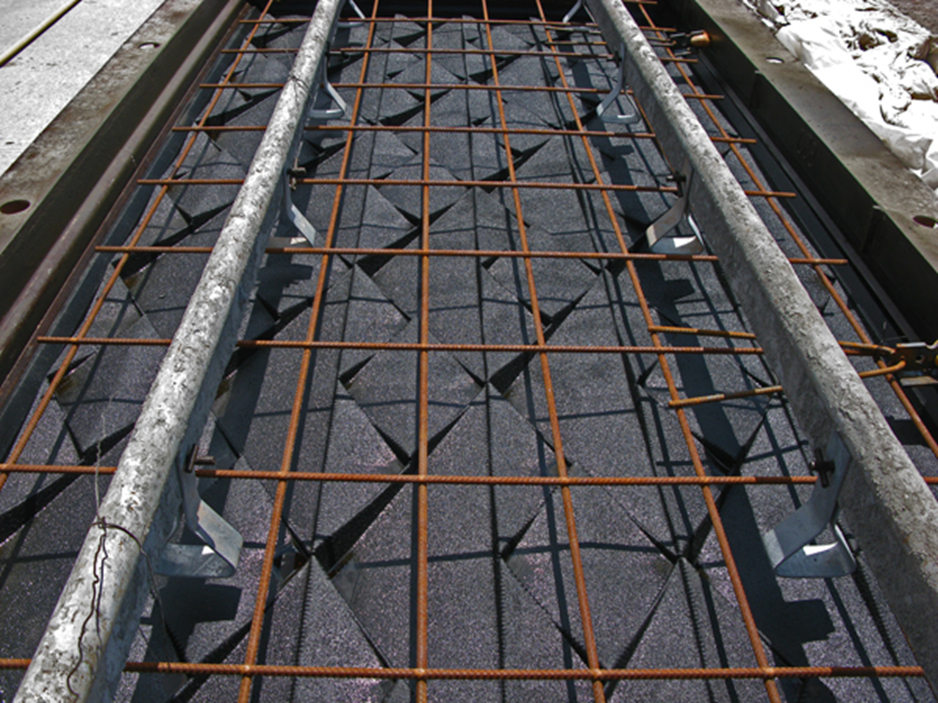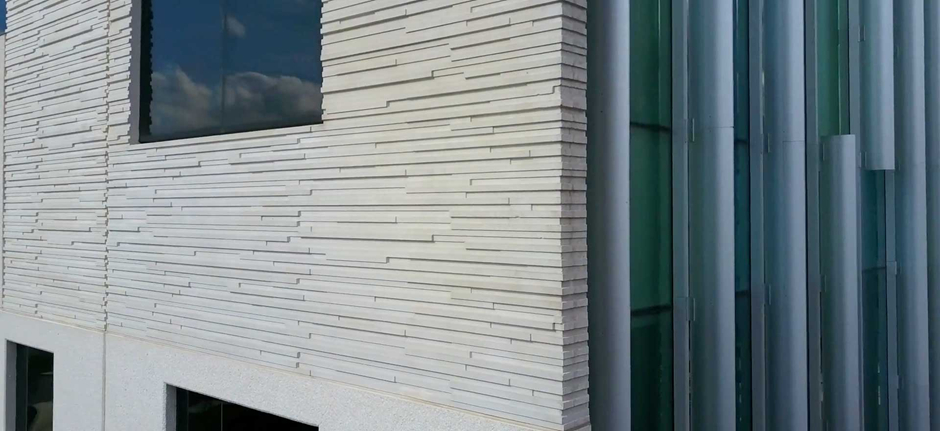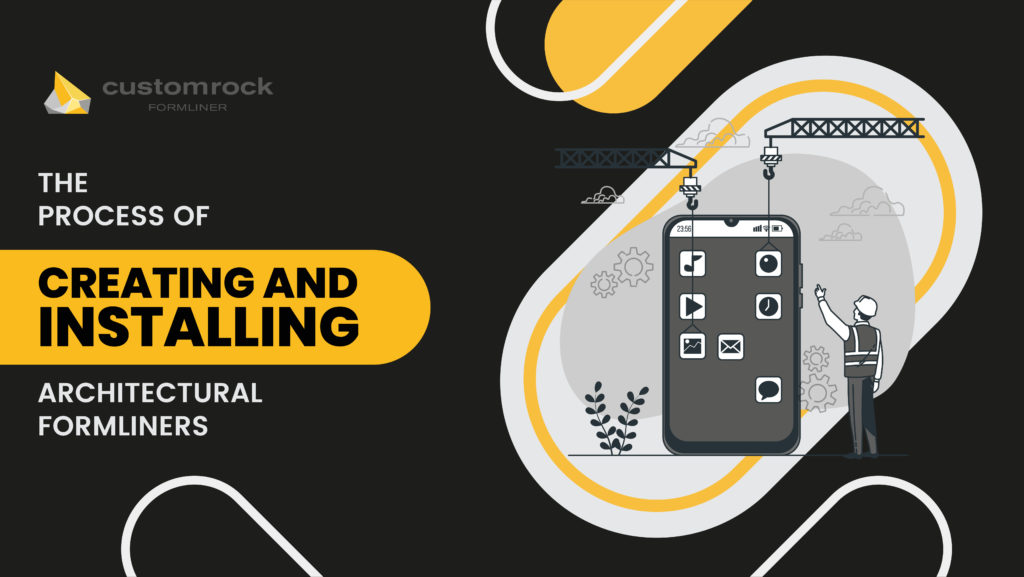TL; DR
The process of creating and installing architectural formliners is an important part of modern construction, allowing designers and builders to create unique and visually appealing concrete surfaces.
With the use of high-quality materials and careful attention to detail, architectural formliners can help shape the built environment and bring character and texture to a wide range of construction projects.
Creating the formliner begins with selecting the material (foam or plaster) that will be used and then shaping it into the desired design. Afterward, the liner must be sealed and air-dried.
Once the formliner is finished, the next step is to install it into whatever wall or facade you are working on.
This installation process can involve attaching anchors or screws and then applying a layer of adhesive to secure the formliner. With patience and skill, anyone can create and install their architectural formliners!
Overview Of Installing Architectural Formliners
Installing architectural formliners is a great way to give your building or landscape design an extra visual interest. Formliners bring texture and dimension to concrete walls, ramps, benches, and other elements. They can be used for both exterior and interior applications. Plus, they’re highly customizable; you can choose from a wide variety of patterns and designs to make your project one of a kind.
Creating and installing architectural formliners can be straightforward with the right guidance. By utilizing the correct processes and techniques, architects can ensure that their buildings are strong and aesthetically pleasing for years to come. Formliners provide a creative way of making concrete more attractive while also protecting it from damage caused by weathering.
This blog will provide an overview of the steps involved in installing architectural formliners. Keep reading to learn more.

Importance Of Formliners In Modern Architecture
Formliners have become an increasingly popular choice in modern architecture, and for a good reason. Formliners are designed to create a seamless transition between the exterior of a building or structure and its interior, creating a unified look. By using formliners, architects can achieve desired visual effects while also providing structural integrity.
Formliners can create various patterns and textures on the exterior of a building, including wood grain, stone, brick, or other unique designs. It allows architects to customize their buildings to fit the needs of every project. Additionally, formliners are designed to be durable and weather-resistant and can last for decades with minimal maintenance.
Process Of Installing Architectural Formliners
Once you have selected the architectural formliners that best suit your project and budget, installing them is next. It can be done in several ways depending on how long-term or short-term you need the formliner to remain in place and considering ease of use and cost-effectiveness.
Materials And Techniques
The materials you will need to install architectural formliners depend on the formliner product and installation technique you choose. It is important to read through the instruction manual for your specific product carefully to understand what components are required and how they should be installed.
In most cases, some type of adhesive such as polyurethane-based adhesive, will be needed to install the formliner. Other installation methods, such as mechanical anchors, may be used if your chosen product does not require an adhesive.
Installation Process
The techniques include CNC routing, water jet cutting, or traditional chiseling and carving. In some cases, steel mesh may add extra strength to the installation.

Design And Production
Once you have selected the installation materials and decided on an installation technique, it is time to begin designing and producing the formliners. Depending on the size of your project, this can be done with various tools, such as CNC routers, water jet cutters, or hand carving tools.
It is essential to consider how best to design and produce the formliners, considering factors such as the size and complexity of the project, time constraints, cost-effectiveness, and any other special requirements.
Manufacturing And Quality Control
Manufacturing and Quality Control are two important aspects of architectural formliner installation. The manufacturing process begins with selecting raw materials such as concrete, plaster, rubber, and other composites to create different textures and shapes. Once the desired shape is achieved, a mold is created, which will be used for production. During this stage, stringent quality control measures are implemented to ensure that the formliners meet all industry standards.
The next step in the manufacturing process is to apply a protective coating to the mold, which helps protect it from damage and wear. It is followed by casting, and the desired material is poured into the mold.
In this stage, quality control measures, such as inspecting the formliner for any cracks or imperfections, are also implemented.
Once the formliner is cured and inspected, it is ready for installation.
Importance Of Manufacturing And Quality Control
Importance of quality control in the manufacturing process of architectural formliners cannot be overstated. Quality control measures ensure that the formliners are produced with precision and accuracy, according to the highest standards of quality. This ensures that each product meets the customer’s expectations and is safe for use in any project.
Manufacturing processes must adhere to strict guidelines. Every step in the manufacturing process must be completed correctly to create a product that meets all safety and quality requirements.
Final Steps
Finally, once you have produced the formliners and are ready to be installed, a few final steps should be taken. It includes ensuring that the formliners are properly secured, that any adhesives or mechanical anchors are correctly applied, and that all necessary safety precautions are taken.
It is also important to check the formliners for any imperfections or inconsistencies before installing them, as these can be difficult to detect after installation. Once these steps have been completed, the architectural formliners are ready to be installed and will enhance the look of your project.
Installation
Installation of architectural formliners can be a relatively easy and cost-effective process. With careful planning and suitable materials, you can create stunning results that will last for years. For installing architectural formliners,
1. Choose the formliners that are appropriate for your project.
2. Read through the instruction manual for your chosen product carefully to understand what components you
need and how to install them.
3. Design and produce the formliners using CNC routers, water jet cutters, or hand carving tools.
4. Secure the formliners properly and apply any necessary adhesives or mechanical anchors.
5. Check the formliners for any imperfections before installing them.
6. Once all steps are complete, you can install the architectural formliners and enjoy their beauty in your
project!
Importance Of Proper Installation
When it comes to installing architectural formliners, accuracy and precision should be prioritized to ensure a successful final product. By investing in quality installation services, architects can rest assured that their vision will come to life and last for many years to come.
The importance of proper installation is also relevant for structural integrity and function. In some cases, improperly installed formliners can move or shift due to any number of environmental risks, such as temperature changes or incorrect curing time. This can cause permanent damage to the formliner as well as any adjacent materials during installation. It can also lead to a loss of structural integrity and decrease the product’s overall lifespan.
Without proper installation, there can be gaps in the overall design, which can lead to visible inconsistencies in the finished product. Additionally, improper installation can reduce or eliminate any water or air-tight seal that may be necessary for the formliner to have a lasting, durable finish.
Maintenance And Upkeep
Maintenance and Upkeep are key components of any architectural formliner installation. The maintenance and upkeep of the formliners will ensure that they are in good condition and look great for years to come.
Here’s what maintenance does to your architectural formliners.
Extends Life
With regular maintenance, it will help to extend the life of the formliner and prevents them from becoming damaged or worn due to weather conditions.
Environmental Protection
During installation, it is important to use appropriate sealants and finishes to protect the formliner from environmental factors like moisture, heat, cold, and UV rays. Additionally, regular inspections should be conducted to check for any signs of damage or wear.
The frequency of maintenance and upkeep for architectural formliners will depend on the environmental conditions in which they are installed. If the formliners are installed in a more extreme climate, then it may be necessary to perform maintenance and upkeep more frequently than if they were installed in a milder one.
Identifies Problems
Regular inspections can help to identify any potential problems early on before they become too costly or difficult to repair.
Saves Money
Taking the time to inspect, clean, and maintain these products can save money in the long run, while ensuring that they look their best throughout their lifespans.
Prevents Contamination
Regular cleaning is also essential for proper maintenance and upkeep of architectural formliners. Dirt and dust can accumulate on the surface of the formliner, causing it to look dingy and dull.
To avoid this, the formliner should be routinely washed using a mild detergent or cleaning solution. Afterward, the surface should be dried with a clean cloth or soft brush to prevent any water spots from forming.
It is important to follow all the manufacturer’s guidelines for proper installation and maintenance of the formliner so that it can continue to look its best for years to come.
Developments In Architectural Formliners
Developments In Architectural Formliners have been a real game-changer for architects and designers. Historically, formliners were used to create molds filled with concrete or other substances to create designs with unique textures and shapes. However, technological advancements have allowed for much more intricate detailing and architectural elements to be added to the design of these structural components.
Architects can now design more complex patterns, shapes, and textures with the use of formliners that can be used to create a variety of looks for any building or structure. This development has opened up new possibilities for architects and designers to experiment with their designs and create truly inspiring works of art.







